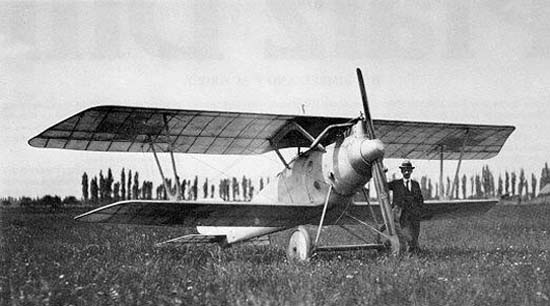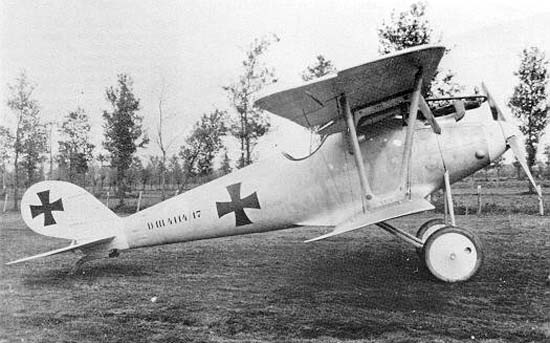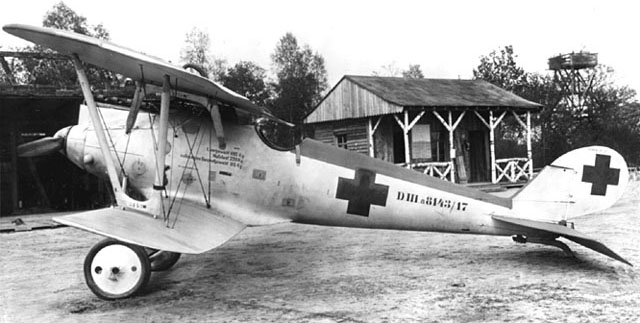Pfalz D.III on:
[Wikipedia]
[Google]
[Amazon]
The Pfalz D.III was a

 Prior to World War I, Pfalz Flugzeugwerke produced Morane-Saulnier monoplane designs under license.Herris 2001, p. 10. These aircraft entered military service as the Pfalz A- and E-series. In September 1916, Pfalz began producing the first of 20 Roland D.I and 200 Roland D.II fighters under license.Herris 2001, pp. 27–28.
In November 1916, Pfalz hired Rudolph Gehringer from Flugzeugbau Friedrichshafen GmbH.VanWyngarden 2006, p. 18. As Pfalz's new chief engineer, Gehringer immediately commenced work on an original fighter design. The resulting D.III emerged in April 1917. Like the Rolands, the D.III used a
Prior to World War I, Pfalz Flugzeugwerke produced Morane-Saulnier monoplane designs under license.Herris 2001, p. 10. These aircraft entered military service as the Pfalz A- and E-series. In September 1916, Pfalz began producing the first of 20 Roland D.I and 200 Roland D.II fighters under license.Herris 2001, pp. 27–28.
In November 1916, Pfalz hired Rudolph Gehringer from Flugzeugbau Friedrichshafen GmbH.VanWyngarden 2006, p. 18. As Pfalz's new chief engineer, Gehringer immediately commenced work on an original fighter design. The resulting D.III emerged in April 1917. Like the Rolands, the D.III used a
 Deliveries to operational units began in August 1917. ''Jasta'' 10 was the first recipient of the new aircraft, followed by ''Jasta'' 4. While markedly better than the earlier Roland designs, the D.III was generally considered inferior to the Albatros D.III and D.V. German pilots variously criticized the Pfalz's heavy controls, low speed, lack of power, or low rate of climb compared to the Albatros.Herris 2001, pp. 61–62.Gray and Thetford 1962, p. 189.VanWyngarden 2006, pp. 50, 62. The D.III slipped in turns, leading to crashes when unwary pilots turned at very low altitudes.Herris 2001, pp. 61–62.VanWyngarden 2006, p. 77. Moreover, the Pfalz stalled sharply and spun readily. Recovery from the resulting flat spin was difficult, though some pilots took advantage of this trait to descend quickly or evade enemy aircraft.VanWyngarden 2006, pp. 45–46.
The Pfalz's primary advantage was its strength and sturdiness. The Albatros scouts were plagued by failure of their single-spar lower wings.Herris 2001, p. 29. The Pfalz, however, could safely dive at high speeds due to its twin-spar lower wing.Guttman 2005, p. 9. For this reason, the Pfalz was well-suited to diving attacks on
Deliveries to operational units began in August 1917. ''Jasta'' 10 was the first recipient of the new aircraft, followed by ''Jasta'' 4. While markedly better than the earlier Roland designs, the D.III was generally considered inferior to the Albatros D.III and D.V. German pilots variously criticized the Pfalz's heavy controls, low speed, lack of power, or low rate of climb compared to the Albatros.Herris 2001, pp. 61–62.Gray and Thetford 1962, p. 189.VanWyngarden 2006, pp. 50, 62. The D.III slipped in turns, leading to crashes when unwary pilots turned at very low altitudes.Herris 2001, pp. 61–62.VanWyngarden 2006, p. 77. Moreover, the Pfalz stalled sharply and spun readily. Recovery from the resulting flat spin was difficult, though some pilots took advantage of this trait to descend quickly or evade enemy aircraft.VanWyngarden 2006, pp. 45–46.
The Pfalz's primary advantage was its strength and sturdiness. The Albatros scouts were plagued by failure of their single-spar lower wings.Herris 2001, p. 29. The Pfalz, however, could safely dive at high speeds due to its twin-spar lower wing.Guttman 2005, p. 9. For this reason, the Pfalz was well-suited to diving attacks on
 Today, there are no known surviving D.III airframes. However, two flying replicas were built for the 1966 film '' The Blue Max''. One replica was built from scratch, while a second was converted from a
Today, there are no known surviving D.III airframes. However, two flying replicas were built for the 1966 film '' The Blue Max''. One replica was built from scratch, while a second was converted from a

fighter aircraft
Fighter aircraft are fixed-wing military aircraft designed primarily for air-to-air combat. In military conflict, the role of fighter aircraft is to establish air superiority of the battlespace. Domination of the airspace above a battlefield ...
used by the '' Luftstreitkräfte'' (Imperial German Air Service) during the First World War
World War I (28 July 1914 11 November 1918), often abbreviated as WWI, was one of the deadliest global conflicts in history. Belligerents included much of Europe, the Russian Empire, the United States, and the Ottoman Empire, with fightin ...
. The D.III was the first major original design from Pfalz Flugzeugwerke. Though generally considered inferior to contemporary Albatros and Fokker fighters, the D.III was widely used by the ''Jagdstaffeln
A ''Jagdstaffel'' (plural ''Jagdstaffeln'', abbreviated to Jasta) was a fighter aircraft, fighter ''Staffel'' (squadron) of the Empire of Germany, German Imperial ''Luftstreitkräfte'' during World War I.
Background
Before April 1916, Luftstr ...
'' from late 1917 to mid-1918. It continued to serve as a training aircraft until the end of the war.
Design and development

 Prior to World War I, Pfalz Flugzeugwerke produced Morane-Saulnier monoplane designs under license.Herris 2001, p. 10. These aircraft entered military service as the Pfalz A- and E-series. In September 1916, Pfalz began producing the first of 20 Roland D.I and 200 Roland D.II fighters under license.Herris 2001, pp. 27–28.
In November 1916, Pfalz hired Rudolph Gehringer from Flugzeugbau Friedrichshafen GmbH.VanWyngarden 2006, p. 18. As Pfalz's new chief engineer, Gehringer immediately commenced work on an original fighter design. The resulting D.III emerged in April 1917. Like the Rolands, the D.III used a
Prior to World War I, Pfalz Flugzeugwerke produced Morane-Saulnier monoplane designs under license.Herris 2001, p. 10. These aircraft entered military service as the Pfalz A- and E-series. In September 1916, Pfalz began producing the first of 20 Roland D.I and 200 Roland D.II fighters under license.Herris 2001, pp. 27–28.
In November 1916, Pfalz hired Rudolph Gehringer from Flugzeugbau Friedrichshafen GmbH.VanWyngarden 2006, p. 18. As Pfalz's new chief engineer, Gehringer immediately commenced work on an original fighter design. The resulting D.III emerged in April 1917. Like the Rolands, the D.III used a plywood
Plywood is a material manufactured from thin layers or "plies" of wood veneer that are glued together with adjacent layers having their wood grain rotated up to 90 degrees to one another. It is an engineered wood from the family of manufactured ...
monocoque fuselage. Two layers of thin plywood strips were placed over a mold to form one half of a fuselage shell.Herris 2001, p. 30. The fuselage halves were then glued together, covered with a layer of fabric, and doped. This ''Wickelrumpf'' (wrapped body) method was a patented invention of the LFG firm.Wagner 1971, pp. 75-76. It gave the fuselage great strength, light weight, and smooth contours compared to conventional construction techniques.Herris 2001, p. 30. However, it also proved to be more labor-intensive and expensive. Furthermore, fuselages of the ''Wickelrumpf'' type proved to be liable to twisting or warping in service, affecting performance as well as causing control problems. This has been attributed to moisture absorption in damp front-line conditionsHerris 2001, pp. 61–62. or to the use of insufficiently seasoned wood.
The wings were of conventional construction, with a flush Teves und Braun radiator
Radiators are heat exchangers used to transfer thermal energy from one medium to another for the purpose of cooling and heating. The majority of radiators are constructed to function in cars, buildings, and electronics.
A radiator is always a ...
offset to the right side of the upper wing. The ailerons were wooden, rather than the more usual steel tube construction.Gray and Thetford 1962, p. 188. The horizontal stabilizer had an inverted airfoil section, which facilitated dive recovery and permitted the use of an unbalanced elevator.
'' Idflieg'' found the prototype promising. It directed Pfalz to halt production of the Roland D.III and to complete the balance of the contract, 70 aircraft, to the new design. After a ''Typenprüfung'' (type test) at Adlershof in May, the ''Idflieg'' ordered various modifications, including an enlarged rudder and horn-balanced ailerons.VanWyngarden 2006, p. 19. In June 1917, Pfalz received a second order for 300 aircraft.
Operational history
 Deliveries to operational units began in August 1917. ''Jasta'' 10 was the first recipient of the new aircraft, followed by ''Jasta'' 4. While markedly better than the earlier Roland designs, the D.III was generally considered inferior to the Albatros D.III and D.V. German pilots variously criticized the Pfalz's heavy controls, low speed, lack of power, or low rate of climb compared to the Albatros.Herris 2001, pp. 61–62.Gray and Thetford 1962, p. 189.VanWyngarden 2006, pp. 50, 62. The D.III slipped in turns, leading to crashes when unwary pilots turned at very low altitudes.Herris 2001, pp. 61–62.VanWyngarden 2006, p. 77. Moreover, the Pfalz stalled sharply and spun readily. Recovery from the resulting flat spin was difficult, though some pilots took advantage of this trait to descend quickly or evade enemy aircraft.VanWyngarden 2006, pp. 45–46.
The Pfalz's primary advantage was its strength and sturdiness. The Albatros scouts were plagued by failure of their single-spar lower wings.Herris 2001, p. 29. The Pfalz, however, could safely dive at high speeds due to its twin-spar lower wing.Guttman 2005, p. 9. For this reason, the Pfalz was well-suited to diving attacks on
Deliveries to operational units began in August 1917. ''Jasta'' 10 was the first recipient of the new aircraft, followed by ''Jasta'' 4. While markedly better than the earlier Roland designs, the D.III was generally considered inferior to the Albatros D.III and D.V. German pilots variously criticized the Pfalz's heavy controls, low speed, lack of power, or low rate of climb compared to the Albatros.Herris 2001, pp. 61–62.Gray and Thetford 1962, p. 189.VanWyngarden 2006, pp. 50, 62. The D.III slipped in turns, leading to crashes when unwary pilots turned at very low altitudes.Herris 2001, pp. 61–62.VanWyngarden 2006, p. 77. Moreover, the Pfalz stalled sharply and spun readily. Recovery from the resulting flat spin was difficult, though some pilots took advantage of this trait to descend quickly or evade enemy aircraft.VanWyngarden 2006, pp. 45–46.
The Pfalz's primary advantage was its strength and sturdiness. The Albatros scouts were plagued by failure of their single-spar lower wings.Herris 2001, p. 29. The Pfalz, however, could safely dive at high speeds due to its twin-spar lower wing.Guttman 2005, p. 9. For this reason, the Pfalz was well-suited to diving attacks on observation balloon
An observation balloon is a type of balloon that is employed as an aerial platform for intelligence gathering and artillery spotting. Use of observation balloons began during the French Revolutionary Wars, reaching their zenith during World War ...
s, which were usually heavily defended by anti-aircraft gun
Anti-aircraft warfare, counter-air or air defence forces is the battlespace response to aerial warfare, defined by NATO as "all measures designed to nullify or reduce the effectiveness of hostile air action".AAP-6 It includes surface based, ...
s trained to the balloon's altitude.Guttman 2005, pp. 7–9.
D.IIIa
The most pressing complaint about the new Pfalz was that the guns were buried in the fuselage, preventing pilots from clearing gun jams in flight.Herris 2001, p. 30. This feature had been carried over from the earlier Roland designs. In November 1917, Pfalz responded by producing the slightly modified D.IIIa, which relocated the guns to the upper fuselage decking.Herris 2001, p. 30. The D.IIIa was distinguishable by its enlarged semicircularhorizontal stabilizer
A tailplane, also known as a horizontal stabiliser, is a small lifting surface located on the tail (empennage) behind the main lifting surfaces of a fixed-wing aircraft as well as other non-fixed-wing aircraft such as helicopters and gyroplan ...
and cropped lower wingtips.Herris 2001, p. 30. It also featured a more powerful version of the Mercedes D.III engine.
Pfalz built approximately 260 D.III and 750 D.IIIa aircraft. Most were delivered to Bavarian ''Jastas''.VanWyngarden 2006, p. 45. Once Pfalz completed the final batch in May 1918,Grosz 1995, p. 2. production shifted to the D.IIIa's successor, the D.XII. Some aircraft from the final D.IIIa batch were delivered to Turkey.Grosz 1995, p. 2.
As of 30 April 1918, 433 D.IIIa scouts were still in frontline use.Herris 2001, p. 154. By 31 August, that number had declined to 166.Herris 2001, p. 154. Many serviceable aircraft were sent to advanced training schools, but approximately 100 aircraft remained in frontline use at the time of the Armistice.
Operators
; *'' Luftstreitkräfte'' *'' Kaiserliche Marine'' ; * Ottoman Air ForceReplica aircraft
 Today, there are no known surviving D.III airframes. However, two flying replicas were built for the 1966 film '' The Blue Max''. One replica was built from scratch, while a second was converted from a
Today, there are no known surviving D.III airframes. However, two flying replicas were built for the 1966 film '' The Blue Max''. One replica was built from scratch, while a second was converted from a de Havilland Tiger Moth
The de Havilland DH.82 Tiger Moth is a 1930s British biplane designed by Geoffrey de Havilland and built by the de Havilland Aircraft Company. It was operated by the Royal Air Force (RAF) and other operators as a primary trainer aircraft. ...
airframe. Both replicas are currently based in New Zealand. A third flying replica was built by Ron Kitchen of Nevada in 1987 but is now on static display at the Cavanaugh Flight Museum in Addison, Texas.
Another, static replica was built by the modern Pfalz company in 2005 and is on display at the Auto und Technik Museum
The Technik Museum Sinsheim is a technology museum in Sinsheim, Germany. Opened in 1981, it is run by a registered association called "Auto & Technik Museum Sinsheim e. V." which also runs the nearby Technik Museum Speyer.
Statistics
, the mus ...
in Speyer
Speyer (, older spelling ''Speier'', French: ''Spire,'' historical English: ''Spires''; pfl, Schbaija) is a city in Rhineland-Palatinate in Germany with approximately 50,000 inhabitants. Located on the left bank of the river Rhine, Speyer li ...
.
Specifications (D.IIIa)

See also
References
Notes
Bibliography
* Gray, Peter and Owen Thetford. ''German Aircraft of the First World War''. London: Putnam, 1962. . * Grosz, Peter M. ''Pfalz D.IIIa (Windsock Datafile No. 21)''. Berkhamsted, Herts, UK: Albatros Publications, 1995. . * Guttman, Jon. ''Balloon-Busting Aces of World War 1 (Aircraft of the Aces No. 66)''. Oxford: Osprey Publishing, 2005. . * Herris, Jack. ''Pfalz Aircraft of World War I (Great War Aircraft in Profile, Volume 4)''. Boulder, Colorado: Flying Machine Press, 2001. . * * VanWyngarden, Greg. ''Pfalz Scout Aces of World War I (Aircraft of the Aces No. 71)''. Oxford: Osprey Publishing, 2006. . * Wagner, Ray and Heinz Nowarra. ''German Combat Planes: A Comprehensive Survey and History of the Development of German Military Aircraft from 1914''. New York: Doubleday, 1971. {{Authority control 1910s German fighter aircraft Military aircraft of World War I D.III Sesquiplanes Aircraft first flown in 1917